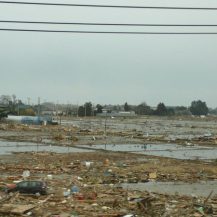Are They Civilians or Mercenaries?
Misleading government statements mask the actual extent of Washington’s military involvement in Colombia.
This text originally published: 26 February 2001

by Garry Leech and Eric Fichtl
Last week, Washington repeatedly referred to the U.S. crew flying a mission in a State Department helicopter that was fired at by Colombian rebels as ‘civilians.’ These ‘civilians’ were dispatched to rescue the Colombian police crew of a U.S.-built Huey II helicopter gunned down by the Revolutionary Armed Forces of Colombia (FARC) in the southern department of Caquetá.
The misleading statements by the U.S. government give the impression that the U.S. ‘civilians’ were the victims of an unwarranted attack by Marxist guerrilla forces. But what the government and much of the media failed to mention was that these U.S. ‘civilians’ are in actuality mercenaries contracted by Washington to perform military duties in conflict zones.
Washington hawks learned from the Vietnam experience that when U.S. troops begin dying in combat, U.S. public opinion goes sour quickly. In the Central American conflicts of the 1980s, Washington modified its intervention strategy from the Vietnam model of placing U.S. troops directly in the line of fire to a policy of funding, arming and training military (El Salvador and Guatemala) and counterrevolutionary (Nicaraguan Contras) allies.
While maintaining the Vietnam and Central America strategy of deploying military advisors in non-combat zones, in Colombia the U.S. government has increasingly contracted out frontline duties to ‘civilians.’ But these ‘civilians’ are in fact military veterans, many with Vietnam combat experience, who work for private U.S. corporations such as Military Professional Resources, DynCorp and Virginia Electronics. These companies have to be licensed by the U.S. State Department, assuring that only those that adhere to Washington’s foreign policy agenda receive government accreditation.
Military Professional Resources, which was formed in 1987 by retired U.S. Army General Vernon Lewis, was contracted by the Clinton Administration in 1999 to send military advisors to work with the Colombian Army. In December 2000, former U.S. ambassador to Colombia, Myles Frechette, told the St. Petersburg Times, “It’s very handy to have an outfit not part of the U.S. armed forces. Obviously, if somebody gets killed or whatever, you can say it’s not a member of the armed forces. Nobody wants to see American military men killed.”
This new strategy’s success is illustrated by the fact that at least three DynCorp ‘civilians’ have been killed in the line of duty in Colombia with little or no press coverage in the United States. DynCorp, which was formed after World War II at the behest of President Truman to provide jobs for ex-combatants and to make use of leftover war materiel, has some 50 ex-military pilots and mechanics working in Colombia under a contract with the U.S. State Department (see, U.S. Mercenaries in Colombia).
DynCorp pilots and crew, accompanied by Colombian military personnel, routinely fly sorties over guerrilla-controlled territory, with the State Department stipulation that Colombians must man the guns. Also, DynCorp mechanics and technicians charged with maintaining high-tech U.S. weaponry are an essential cog in the Colombian war machine and consequently have become a prime target of the FARC.
It was DynCorp pilots who were flying the State Department helicopter sent to rescue the downed Colombian air crew in the FARC-controlled territory of southern Colombia. This incident received some attention in the mainstream media, but nowhere near the coverage it would have received had official U.S. military forces been attacked by Colombian guerrillas.
The government’s emphasis on the word ‘civilian’ blurs the public’s perception of the actual extent of Washington’s military involvement in Colombia. The use of U.S. taxpayer dollars to hire ex-military personnel to perform combat-related duties for the U.S. Government is, in effect, the same as sending in U.S. troops. However, Washington’s use of the mercenary strategy allows it to wage war in Colombia without being held accountable by the U.S. Congress and the people.
On February 19, Narco News reported that teams of retired U.S. Navy SEALS had been contracted to operate high-tech gunboats on the Putumayo River in southern Colombia. They work with the Colombian Military as part of the Riverine Program that intercepts drug traffickers and often fights FARC guerrillas. Like the DynCorp pilots, they work for a U.S. company, Virginia Electronics, contracted by the U.S. government to perform military duties with the armed forces of Colombia. The U.S. government calls them ‘civilians,’ but according to Webster’s dictionary they should be called mercenaries: one who serves merely for wages, or a soldier serving in a foreign army.
The U.S. government uses taxpayer dollars to covertly hire mercenaries because it knows the U.S. Congress and the public will not support the deployment of U.S. troops in combat zones in Colombia. However, the end result is the same: U.S. tax dollars funding direct U.S. military involvement. Washington knows that contracting civilians willing to risk their lives in Colombia will not attract the same sort of media attention and public outcry as U.S. soldiers being shipped home in body bags.
Notes
Image: A U.S.-supplied Colombian Army Huey helicopter in southern Colombia. Photo: Garry Leech
This article originally appeared in Colombia Journal, an online journal that was published by the Information Network of the Americas (INOTA).


